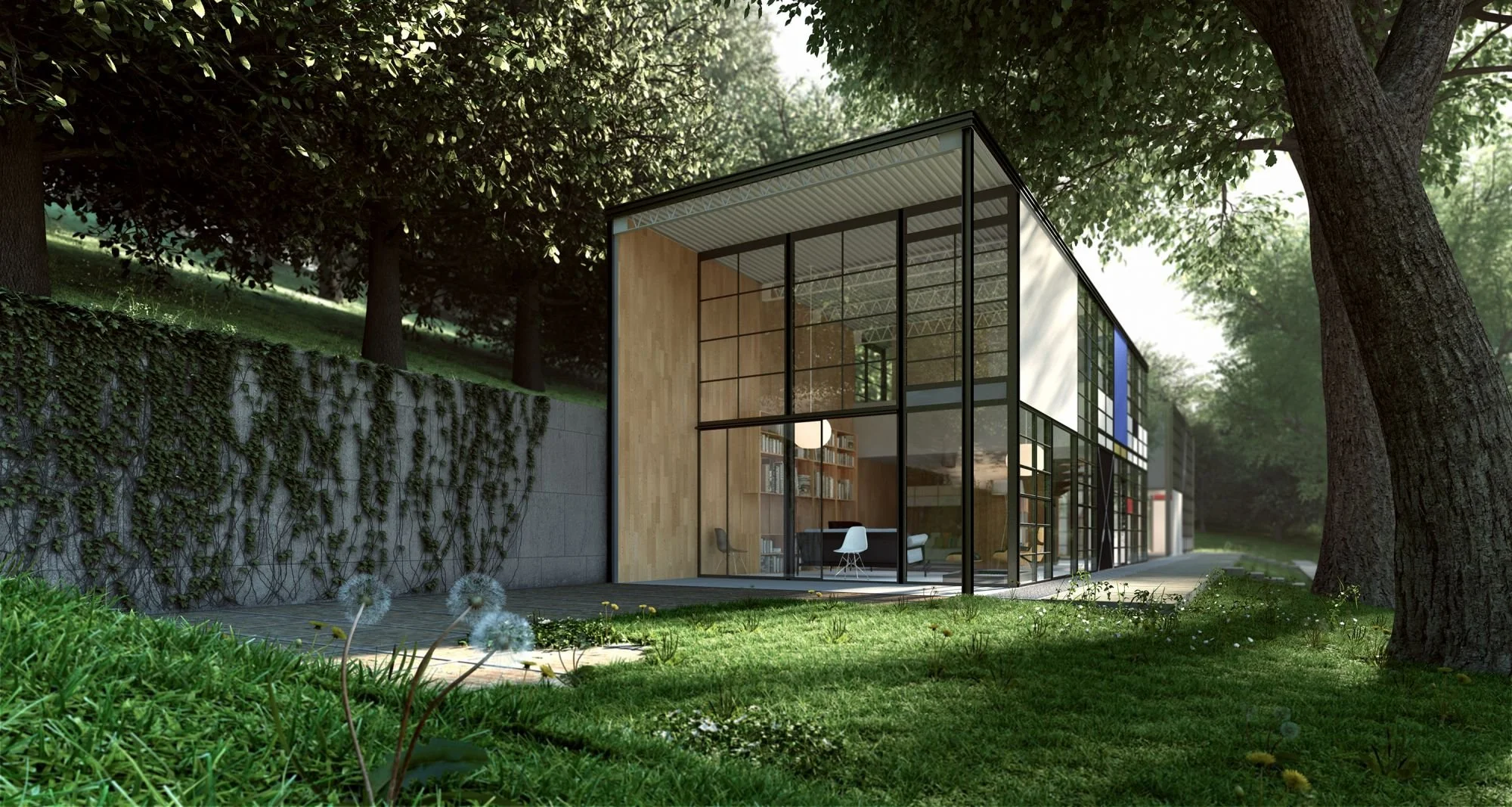The Eames House: Where Function Met Joy and Changed Design Forever
Photo: Archeyes
There’s something magic about owning a piece of design that you know has changed the world. Every time I sit in my Eames Lounge Chair (or even the humble molded side chair), I’m reminded of how radical — and joyful — design can be when it’s done right.
That’s why the Eames House, also known as Case Study House No. 8, is one of the most important homes ever built. It wasn’t just a house — it was a manifesto. A live-in laboratory of ideas, comfort, creativity, and practicality. And true to form, it wasn’t built for a client — it was the actual home of Charles and Ray Eames themselves.
Let’s dive into the story of the house where modern design got personal, colorful, and endlessly inspiring.
The Context: Case Study House Program
The Eames House was part of the Case Study House Program, the same initiative that gave us the Stahl House. Spearheaded by Arts & Architecture Magazine, it invited forward-thinking architects to design affordable, efficient, and modern homes for post-war American families.
Charles and Ray Eames were already making waves in the world of furniture and industrial design — known for their revolutionary molded plywood and fiberglass pieces. But with this house, they would show the world how to actually live with modernism.
The Build: Creative Detour Turned Genius
Here’s the twist most people don’t know: the Eameses completely redesigned their original plan just weeks before construction began.
The original blueprint had the house sitting across the meadow, blocking the view of the Pacific Ocean. But when the materials arrived on-site, Ray walked the property and realized something: they were about to ruin the view.
So they scrapped the original design and, in classic Eames fashion, came up with a new plan—on the spot. One that preserved the meadow, tucked the house into the hillside, and worked with the landscape, not against it.
This kind of flexible thinking — where form really follows function — was exactly what set the Eameses apart.
The Design: A Home That Works Like a Machine, Feels Like a Painting
Completed in 1949, the Eames House is a two-story structure made from off-the-shelf industrial materials: steel frames, glass panels, and prefabricated panels in striking colors. It’s modular and minimal, but far from cold.
What makes it so human is the way Charles and Ray layered it with life:
Color Blocking: Panels of red, blue, yellow, black, and white create rhythm and warmth — a nod to De Stijl and Japanese architecture.
Open Plan Living: The interior is flexible and open, filled with art, books, textiles, and furniture the couple designed themselves.
Connection to Nature: Floor-to-ceiling windows look out onto eucalyptus trees, and the house is built around — not over — the landscape.
There’s nothing sterile or overly styled here. The space feels like a working studio, a place where ideas happen — which is exactly what it was.
Charles & Ray Eames: The Heart of the Home
What makes the Eames House so special isn’t just the structure — it’s the people who lived in it. Charles and Ray were partners in every sense: creative collaborators, life partners, and passionate explorers of design in all its forms.
They used the house as:
A living workspace for prototyping furniture and films.
An entertaining space for guests from all over the world.
A home — with a cozy reading nook, a warm fireplace, and an ever-growing collection of objects they loved.
They weren’t just making furniture or architecture — they were creating a way of living that celebrated creativity, curiosity, and comfort.
Why the Eames House Still Matters Today
It’s the Blueprint for Modern Living
Affordable, prefabricated, and modular — ideas we’re still chasing in sustainable housing today.
It Redefined What a Home Could Be
The Eameses taught us that homes aren’t showcases — they’re labs for living, evolving and personal.
It’s a Living Museum
You can visit the Eames House today (and you should, if you’re ever near Pacific Palisades). The house remains just as it was when Ray Eames lived there — filled with books, toys, textiles, and that unmistakable Eames charm.
It Connects Directly to What We Sit On
For anyone who owns an Eames chair (like me), this house is where those ideas were tested, used, lived in. It’s not just iconic — it’s deeply personal.
Final Thoughts
The Eames House is less about showmanship and more about intelligence, joy, and intention. It wasn’t built to impress—it was built to work and inspire.
And it still does.
As someone who lives in a mid-century modern home and deeply values the philosophy of vintage design, the Eames House feels like a kindred spirit. It's not just about sleek lines or clever construction — it's about the belief that good design can make life better.
And really, what more could we want from a home?






